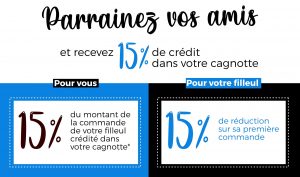Advantages and disadvantages of optical fiber transmission in telecommunications
Advantages and disadvantages of optical fiber transmission in telecommunications
The EPON OLT is a device serving as the endpoint for the service provider in a passive optical network. In other words, the Optical Line Terminal (OLT) manages the Ethernet Passive Optical Network (EPON). This technology offers multiple services thanks to its point-to-multipoint passive optical transmission.

1. What is fiber optic transmission?
Fiber optic communications systems often consist of three main elements. This is an optical transmitter, cable and optical receiver.
Optical emitters
An optical transmitter converts electrical signals into optical signals. The devices used to transmit optical signals are often LEDs (light-emitting diodes) or laser diodes.
Fiber optic cables
Fiber optic cabling carries the optical signal (in the form of light), from transmitter to receiver. There are a wide variety of optical cables and their usage varies depending on the application required.
Optical receivers
The optical receiver converts the optical signal back into an electrical signal. The key element of most optical receivers is the photodetector.
2. Advantages of optical fiber transmission
The use of fiber optic transmission systems has a number of advantages:
Bandwidth
No other means of cable transmission can offer the same bandwidth as fiber. Compared to copper cabling for example, the volume of data that can be transmitted is much greater with fiber.
Distance
Fiber optic transmission is capable of transmitting with much less power loss over greater distances.
interference
Compared to other media, fiber is extremely resistant to unavoidable external electromagnetic interference, which means that its bit error rate is very low.
Safety
Given the data security concerns currently plaguing the telecommunications industry, fiber optic transmission provides an increased level of security that cannot be matched by other materials. Indeed, there is no way to “listen” to the electromagnetic energy “leaking” from the cable.
3. Disadvantages of optical fiber transmission
Although there are many more advantages than disadvantages to using fiber optic transmission, the disadvantages should not be ignored.
Installation difficulties
Splicing fiber optic cables is not easy and if they are bent or manipulated too much in their shape, they will break. They are very susceptible to being cut or damaged during installation or during construction work.
Fragility
Fiber optic cable is made of glass, which is more fragile than electrical wires such as copper wiring. Additionally, glass can be damaged by chemicals such as hydrogen gas, which can affect transmission. The installation of an underwater fiber optic cable must be subject to particular attention due to its fragility.
Attenuation and dispersion
When transmitted over long distances, light attenuates and scatters, which means that additional components such as EDFA (erbium doped fiber amplifier – an optical repeater used to increase the intensity optical signals carried by a fiber optic communication system) are required.
Cost
The production cost of fiber optic cables is higher than that of copper cables.
4. Overview
Due to its efficiency and capacity, optical fiber transmission is widely used and continues to be adopted for data transmission in place of metal wires. Traditional materials such as copper twisted pair cabling or coaxial cabling are gradually being replaced by modern fiber optic options and, as the demand for increased speed and bandwidth continues to increase, fiber optic will continue to be deployed in future telecommunications networks.
Tags: sc apc
Related posts
-
 Q&A E-solutionQ&A ELFCAM SOLUTION 1. OEM, ODM service is available? If MOQ=3KPCS, we can offer...
Q&A E-solutionQ&A ELFCAM SOLUTION 1. OEM, ODM service is available? If MOQ=3KPCS, we can offer... -
 What is ONU EPON (GEPON): Functions and typesWhat is EPON ONU (GEPON): Functions and Types EPON ONU is a device that...
What is ONU EPON (GEPON): Functions and typesWhat is EPON ONU (GEPON): Functions and Types EPON ONU is a device that...










